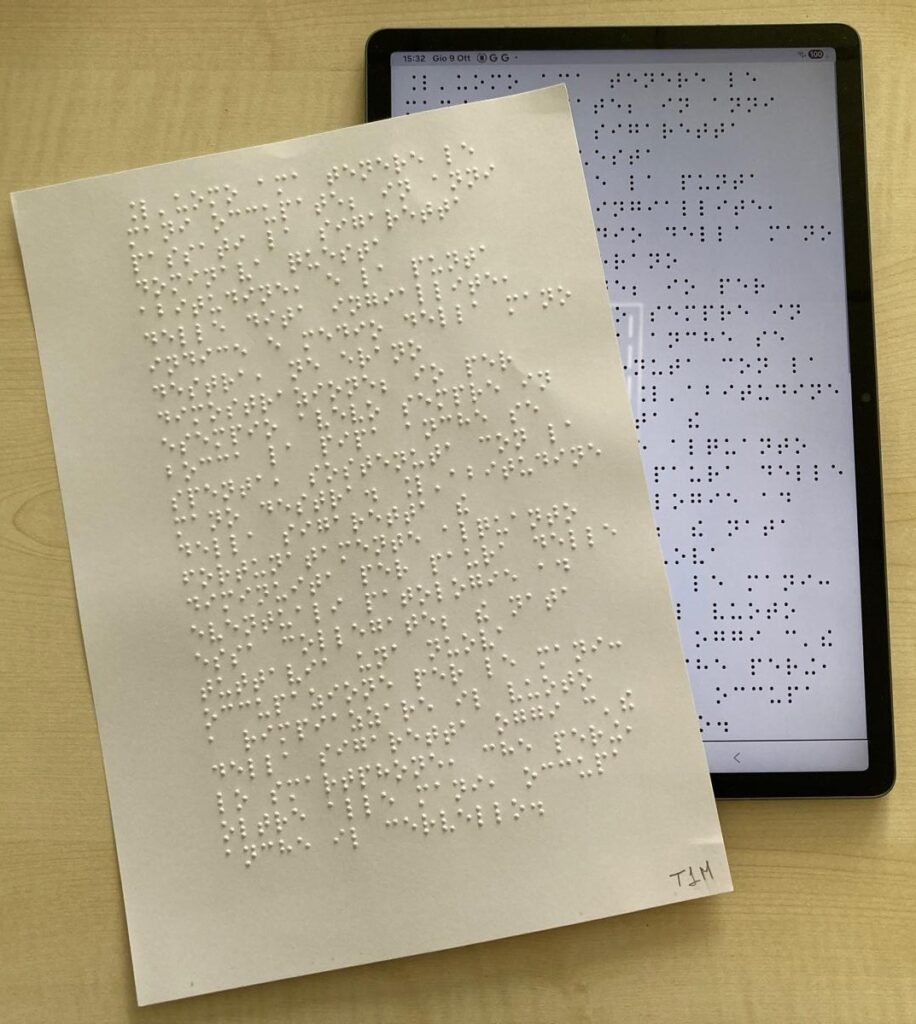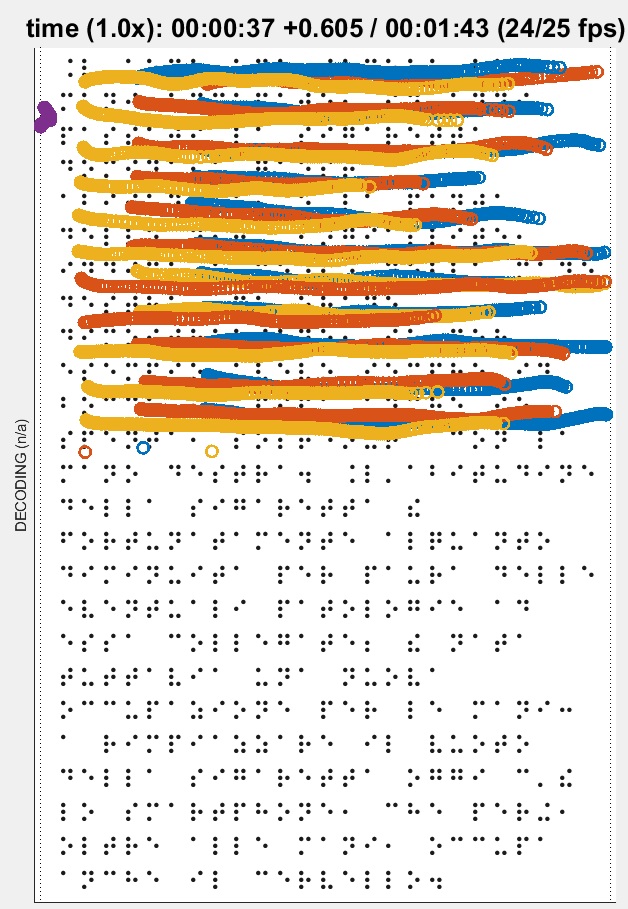BrailLet – a data-driven investigation into the cognitive demands of braille reading – is a two-year PRIN 2022 PNRR (P2022MMJAK) project funded by the Ministry of University and Research (MUR) and the European Union (PNRR, NextGenerationEU).
The project began in November 2023 and is scheduled to end in February 2026. BrailLet aims to develop a prototype of an innovative platform that uses state-of-the-art Information and Communication Technology (ICT) and Natural Language Processing (NLP) solutions to automatically collect, align along the time axis, analyse and classify finger movements and vocal productions of adults undergoing reading tests, referring to two groups of participants: adult blind and sighted people.
The BrailLet consortium includes:
– The Institute for Computational Linguistics “Antonio Zampolli” of the National Research Council (CNR-ILC) in Pisa, Italy
– The Institute of Information Science and Technologies “Alessandro Faedo” of the National Research Council (CNR-ISTI) in Pisa, Italy
– The Department of Nervous System and Behavioural Sciences of the University of Pavia (UNIPV) in Pavia, Italy
BrailLet is built on top of the ReadLet platform, and uses an innovative data collection and analysis methodology based on the use of a tablet with a Braille card superimposed on its screen and a battery of automatic linguistic-behavioural data analysis services managed by a cloud platform, to which the tablet transmits the data collected in real time via a secure, encrypted internet protocol. The data relating to the subjects’ verbal output and finger movements on the Braille card, captured by the tablet and analysed remotely, are used to create anonymous linguistic and behavioural profiles and analysed using machine learning techniques with the aim of investigating similarities and differences between the reading strategies employed by i) blind or visually impaired readers on texts in Braille symbols printed on cards and ii) sighted readers on texts in black.


Braille will primarily enable us to evaluate the similarities and differences between the Braille reading strategies used by blind people and the strategies used by sighted people when reading black text. In particular, during the analysis of the collected data, the reading behaviours wil be compared by extracting reading anticipation indices (finger-voice and eye-voice span), reading speed indices (syllables per second), comprehension indices (accuracy of responses to a questionnaire), decoding ability indices (hesitations, pronunciation errors, self-corrections), and on the relationship between these indices and the underlying text structure.